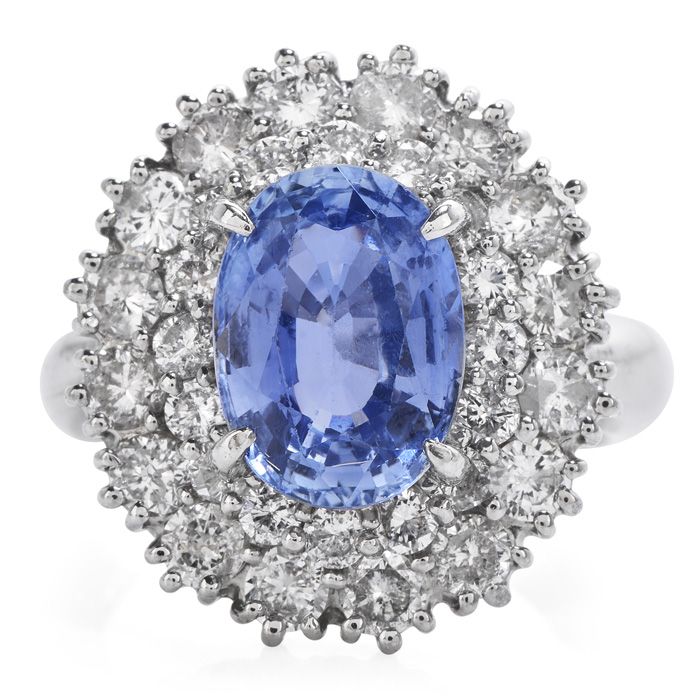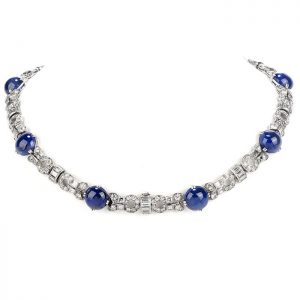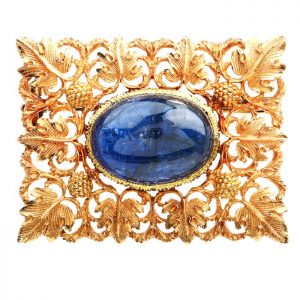
How to Tell a Real Sapphire from a Synthetic or Fake One.
There is nothing more disheartening than to discover that your treasured sapphire jewelry is fake.
Perhaps you inherited a beautiful-looking sapphire ring or earrings, and you want to find out its value – or you were given sapphire jewelry as a gift but are suspicious about its authenticity. At Dover, we have a team of GIA Gemologists on Brickell Ave. Master Jewelers and Jewelry Experts who can tell you if your stone is natural, synthetic, or fake.
Color
The first thing to remember is that sapphires do not only come in blue. They can also be red, yellow, green, orange or other colors in between. Don’t be put off if your sapphire is not blue. Also remember that natural, flawless sapphires are rare, so most of them are heat treated to deepen their color.
Is your sapphire real, synthetic, or imitation?
- Real sapphires (corundum) are mined from the earth. Let’s take a look at a real sapphire with its GIA authentification documents.
- Synthetic sapphires are man-made in a laboratory and are the same as real ones, chemically, structurally, and optically. They are not fake. They are lower-priced than real sapphires, and they are considered by many to be the “ethical’ and “sustainable” choice.
- Imitation sapphires are made from other substances such as CZ, glass, and blue spinel. They are less desirable and much less valuable.
- Contact Dover Jewelry to learn more about the authenticity of this exquisite jewel. Our team at the Brickell Miami Showroom welcomes your appointment in person!
Here is a list of tests to find out what type of sapphire you have:
-
Check For Blemishes
Natural sapphires have flaws and inclusions which prove that they came straight from nature. If you look at them with a jeweler’s magnifying glass or loupe, you will see small spots and blemishes which occur naturally as the sapphire formed thousands of years ago under the earth. Synthetic, laboratory-made sapphires area generally flawless, though they have the same kind of chemical composition as real sapphires. They are subjected to the same kind of formation process as a natural sapphire, but the process is speeded up to a few weeks in a laboratory. Imitation, fake sapphires can be made from other low-quality substances, even glass. Glass fakes show tiny air bubbles within the stone as pockets of air are trapped within it during manufacture.
-
Scratch Test
Sapphire ranks a 9 on the Mohs Hardness Scale, second only to a diamond, so if it leaves a mark when scratched with a harder substance, you will know it is a fake. You can try this by scratching the stone with a diamond, a key or a coin.
-
Breath Test
This is a simple way to tell if your sapphire is real or not. Just breathe on it. A natural sapphire will un-fog in a second or two. An artificial one will take much longer.
-
Light Test
Turn out the lights in a room and shine a flashlight on the sapphire. It should reflect only the color of the stone. If it reflects other colors too, it is a fake.
-
Line Test
If you can see intersecting lines in your sapphire while examining it under a microscope, it is a poor-quality stone – but not necessarily a fake. It is called a ‘composite’ sapphire, as the seller has filled in the inclusions with lead glass to make it look better.
-
Has it Been Heat Treated?
Many sapphires are artificially treated to make their color deeper or brighter. While you may not think this is a negative, it does mean that your stone is not 100% ‘real,’ though heat treatment is widely considered a gem industry norm. Treating a sapphire to enhance its color does not last forever, and it needs to be re-done after several years – if you want to maintain the look, that is.
 Dover carries a wide selection of sapphire jewelry, much of it non-heat-treated, which makes it that much more desirable as an investment piece.
Dover carries a wide selection of sapphire jewelry, much of it non-heat-treated, which makes it that much more desirable as an investment piece.
Sapphires are one of the most highly prized colored gemstones on earth and the demand for them is only increasing. While natural sapphires are the most valuable and coveted, there is nothing wrong with a synthetic sapphire, as long as you are not over-charged for something that is actually ‘man-made.”
If you have sapphire jewelry, the best way to be one hundred percent sure of your sapphire’s authenticity is to have it examined by a professional jeweler, who can look at it under a loupe.
At Dover, we have a team of experts who can tell you if your stone is natural, synthetic or fake. If you would like to sell it, our internationally recognized team of consignment experts can give you a fair market value and handle all the arrangements for its sale.
If you would like to sell it, our internationally recognized team of Jewelry consignment experts can give you a fair market value and handle all the arrangements for its sale.
Contact Dover Jewelry to learn more about this exquisite jewel and help you find the gemstone of your dreams, or visit us in our Brickell Miami Showroom to view the sapphire of your dream in person!


